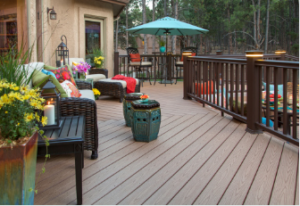Several factors must be considered when planning to add a deck to your home. Durability, weather resistance and aesthetics should all be taken into account.
 SuperbPergolasNDecks decking Adelaide choice will ultimately come down to both budget and personal preference. First, select a material that can withstand harsh elements without frequent upkeep.
SuperbPergolasNDecks decking Adelaide choice will ultimately come down to both budget and personal preference. First, select a material that can withstand harsh elements without frequent upkeep.
Durability
When selecting decking material, durability is paramount, as your deck will be where you and your family enjoy nature. Durability should last years and be easy to clean and maintain if needed.
When selecting SuperbPergolasNDecks decking Adelaide material, several elements can influence its durability. Climate, material type and other aspects all play an essential role in this decision.
Wood is susceptible to decay and splinters, so you should regularly inspect for signs of damage. If you spot any holes or fragments in your deck boards, contact a professional immediately, so everyone using it remains safe.
Selecting high-grade wood naturally resistant to mould, rot, insect infestation, and warping is essential for guaranteeing your deck will last for many years. Cedar and redwood are two excellent choices in this regard.
Pressure-treated lumber (preferred) is another viable option. It tends to be less expensive than cedar or redwood and resists rot and decay, though it does not last as long.
Plastic decking is an excellent option due to its resistance to extreme weather and other elements. Made from polypropylene, polyethylene or polyvinyl chloride, it contains no organic ingredients that absorb moisture or cause rot.
Synthetic material requires virtually no upkeep and is virtually rotproof, making it a popular choice among many homeowners.
Due to its durability, you can use it on various surfaces like balconies and outdoor kitchens. Furthermore, it is non-toxic and safe for kids and pets to walk on.
Your wooden deck may need to be sealed every year or two if it is exposed to rain and other elements. It helps keep moisture out of the boards, preventing warping or swelling that can develop over time.
Pests such as termites, carpenter ants and woodpeckers can quickly ruin your wooden deck. To detect pest damage, look for signs such as small wood chips on the ground or holes in the boards. If you observe any symptoms, call a pest control company immediately to diagnose and address the issue before it worsens.
Weather Resistance
Maintaining your deck’s aesthetic is essential, but one of the most crucial is protecting it from external elements. Fortunately, many decking materials are designed to withstand rain and other adverse weather conditions.
Composites are an excellent choice because they resist moisture, mould and mildew better than wood. It makes them the ideal solution for homeowners in areas prone to frequent rain or snowfall.
Composite capped decking is the most weatherproof type, featuring a polymer protective four-sided shell that prevents water from getting into the boards’ core. It provides an extra rugged layer that keeps boards from becoming swollen or rotted and helps prevent cracking or fading.
Capped composite decking will last longer than uncapped composites, as its protective layer prevents moisture from damaging the boards’ structural integrity. It means you’ll spend less time sanding and resealing your deck in the future, saving both time and money.
Another suitable material for a deck is natural high-density hardwoods, which will weather naturally to an attractive silver-grey patina over time. Although these decking materials may be pricey, the aesthetic value they add to your outdoor space makes it worthwhile.
Pressure-treated lumber is a popular option for outdoor decks due to its resistance to pest damage and fungal growth. Unfortunately, this treatment isn’t as long-lasting as natural or decay-resistant wood, so it should only be used sparingly.
To prevent mould and mildew from forming on your deck, regularly clean it and eliminate any signs of growth when they appear. Alternatively, you can treat the area with a fungicide designed for decks.
In addition to keeping your deck dry, you can protect it from UV rays by installing awnings or canopies over it and using shade furniture. Patio seating, tables and chairs are all excellent choices for creating shade while enjoying outdoor space.
Rain or shine, adding some shade can make all the difference for you and your family on deck. Depending on which type of decking you select, various shade options, such as canopies, awnings and pergolas, can provide comforting shade.





